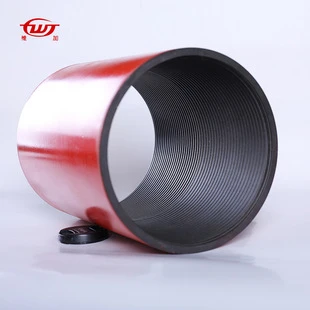- Afrikaans
- Albanian
- Amharic
- Arabic
- Armenian
- Azerbaijani
- Basque
- Belarusian
- Bengali
- Bosnian
- Bulgarian
- Catalan
- Cebuano
- Corsican
- Croatian
- Czech
- Danish
- Dutch
- English
- Esperanto
- Estonian
- Finnish
- French
- Frisian
- Galician
- Georgian
- German
- Greek
- Gujarati
- Haitian Creole
- hausa
- hawaiian
- Hebrew
- Hindi
- Miao
- Hungarian
- Icelandic
- igbo
- Indonesian
- irish
- Italian
- Japanese
- Javanese
- Kannada
- kazakh
- Khmer
- Rwandese
- Korean
- Kurdish
- Kyrgyz
- Lao
- Latin
- Latvian
- Lithuanian
- Luxembourgish
- Macedonian
- Malgashi
- Malay
- Malayalam
- Maltese
- Maori
- Marathi
- Mongolian
- Myanmar
- Nepali
- Norwegian
- Norwegian
- Occitan
- Pashto
- Persian
- Polish
- Portuguese
- Punjabi
- Romanian
- Russian
- Samoan
- Scottish Gaelic
- Serbian
- Sesotho
- Shona
- Sindhi
- Sinhala
- Slovak
- Slovenian
- Somali
- Spanish
- Sundanese
- Swahili
- Swedish
- Tagalog
- Tajik
- Tamil
- Tatar
- Telugu
- Thai
- Turkish
- Turkmen
- Ukrainian
- Urdu
- Uighur
- Uzbek
- Vietnamese
- Welsh
- Bantu
- Yiddish
- Yoruba
- Zulu
Exploring Types and Features of Casing and Tubing Connections in Oil and Gas Industry
Casing and Tubing Connections An Overview
In the oil and gas industry, the efficiency and safety of drilling operations significantly rely on the integrity of the wellbore and its components. Among these components, casing and tubing are critical elements that facilitate the extraction of hydrocarbons from the earth. Casing serves to stabilize the wellbore, while tubing allows for the transportation of oil and gas to the surface. At the heart of effective casing and tubing systems are the connections that join these components, which play a crucial role in maintaining well integrity and operational reliability.
Casing Connections
Casing is a series of pipes that are installed in a drilled well to provide support and prevent the collapse of the wellbore. The casing is typically made from steel and is designed to withstand high pressures and extreme temperatures encountered during drilling operations. The connections used for casing must exhibit high tensile strength, excellent sealing capabilities, and resistance to corrosion.
There are several types of casing connections, including threaded connections, welded connections, and mechanical connections. Threaded connections are the most common, allowing for easy assembly and disassembly of casing string. These connections consist of male and female threads that are screwed together, ensuring a secure joint. There are various thread designs, such as API (American Petroleum Institute) and premium threads, each offering different advantages in terms of sealing properties and resistance to stresses.
Welded connections, on the other hand, involve the welding of casing ends, providing a permanent and often more robust connection than threaded joints. However, welding requires special equipment and expertise, making it less common in certain applications. Mechanical connections, which utilize mechanical devices to join casing sections, are an alternative that can offer flexibility and ease of installation.
Tubing Connections
Once hydrocarbons reach the surface, they must be transported through tubing, which is typically smaller in diameter than casing. Tubing connections are designed to withstand the pressure and potential corrosive effects of the produced fluids. The integrity of these connections is vital since any failure can lead to costly leaks and safety hazards.
Similar to casing, tubing connections also commonly utilize threaded joints, which vary in design depending on the specific application and conditions encountered. API tubing threads are widely used, but many operators opt for premium connection designs that provide enhanced sealing and resistance to torsional and axial loads.
casing and tubing connections

Challenges with Connections
While casing and tubing connections are designed to perform under harsh conditions, several challenges persist. Wellbore instability, corrosion, and mechanical stress can all impact the integrity of connections. For example, downhole conditions such as temperature fluctuations and pressure changes can lead to material fatigue and failure, requiring regular inspection and maintenance of connection integrity.
To mitigate these risks, operators often employ various inspection techniques, including non-destructive testing (NDT) methods such as ultrasonic testing and magnetic particle inspection. These techniques allow for the identification of potential weaknesses or defects in connections before they result in catastrophic failures.
Future Developments
As technology advances, the industry continues to innovate in the field of casing and tubing connections. New materials, such as composite and advanced alloys, are being developed to enhance durability and resistance to environmental factors. Furthermore, improved connection designs that enhance sealing capabilities and stress resistance are being introduced, particularly in challenging environments like deepwater and unconventional shale plays.
Additionally, the industry is moving towards automation and real-time monitoring of connections, leveraging sensors and data analytics to provide insights into connection performance throughout a well’s lifecycle. This proactive approach not only enhances safety but also increases operational efficiency.
Conclusion
Casing and tubing connections are fundamental components in the oil and gas extraction process. They play a critical role in ensuring the integrity and safety of well operations. As the industry continues to evolve, advancements in connection technology will be paramount in meeting the challenges of extracting hydrocarbons from increasingly complex and demanding environments. By focusing on designing durable, reliable, and efficient connections, the oil and gas industry can work towards safer and more sustainable extraction practices.
-
Tubing Pup Joints: Essential Components for Oil and Gas OperationsNewsJul.10,2025
-
Pup Joints: Essential Components for Reliable Drilling OperationsNewsJul.10,2025
-
Pipe Couplings: Connecting Your World EfficientlyNewsJul.10,2025
-
Mastering Oilfield Operations with Quality Tubing and CasingNewsJul.10,2025
-
High-Quality Casing Couplings for Every NeedNewsJul.10,2025
-
Boost Your Drilling Efficiency with Premium Crossover Tools & Seating NipplesNewsJul.10,2025







